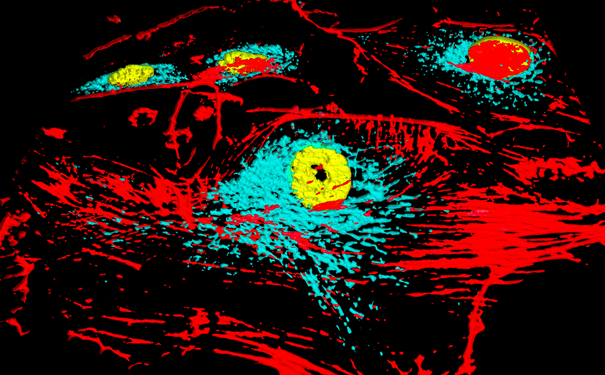
Mitochondria (blue) convert food into energy for the nuclei (yellow) and the rest of our cells. Image: Heiti Paves/Shutterstock
Aussie women have an average lifespan of 84 years, while the men have an average of 80. The reason why could lie in our genes.
Mitochondria, which exist in almost all animal cells, are vital for life because they convert food into energy to power our bodies. However, the mutations in these little powerhouses may also be influencing how long the males of a species survive, according to scientists from Monash University in Melbourne, although they aren’t sure why.
One possibility is that the toxic free radicals leaked by the mitochondria during energy production are damaging the cells, according to Dr Damian Dowling, one of the authors of the study published in Current Biology. “It could be that males with these mitochondrial mutations either leak more ROS or are less able to get rid of and nullify the effects of excess free radicals than females.”
It isn’t just human females that live longer — other species also have variations in lifespan between the sexes. To see if the mutations in mitochondria were the cause, Dowling and PhD student Florencia Camus developed 13 different strains of flies using mitochondrial genomes collected from fruit fly (Drosophila melanogaster) populations around the globe. They placed the genomes inside a completely standard nuclear background, so the only difference between the strains was the origin of the mitochondria and the small set of genes found within them.
They were then able to examine the ageing/lifespan of each of these strains, in both females and males. “We found that the origin of the mitochondria explained lots of the variation in male ageing across strains, but none of the variation for female ageing,” Dowling says. “This indicated that there is a lot of mitochondrial genetic variance (i.e. mutations) affecting the way that male flies age.”
However, they don’t appear to have any impact on the lifespan of the females. This is due to the unusual way in which we inherit mitochondria genes — instead of getting them from both parents, we only receive them from our mothers.
Natural selection, evolution’s quality control process, is therefore only screening mitochondrial genes carried by females and letting mutations that may harm the males slip through unnoticed. “So, if a female carried a mutation that works well inside of females, but is harmful to males, natural selection can’t detect this mutation and it is passed on to future generations,” Dowling explains.
These mutations may only explain a fraction of the four-year discrepancy found in humans, but it gives the researchers a clue on where to start with investigating the genetic mechanisms that males might use to nullify the effects of these harmful mutations.







Fahad
August 15, 2012
what about Bangladesh in South Asia
so far i know here our average lifespan is only 55!!!
we want good gene!!
Ron Williams
December 31, 2013
Hi Fahad,
I hope you’re joking… 🙂
The ages mentioned apply to ‘western’ societies, where the genetic potential for longevity is nearing its current maximum.
Man, I’m sure you’ve got good genes already – next, good water, nutrition and medical services for the bulk of the population, not just a few.
Best,
Ron